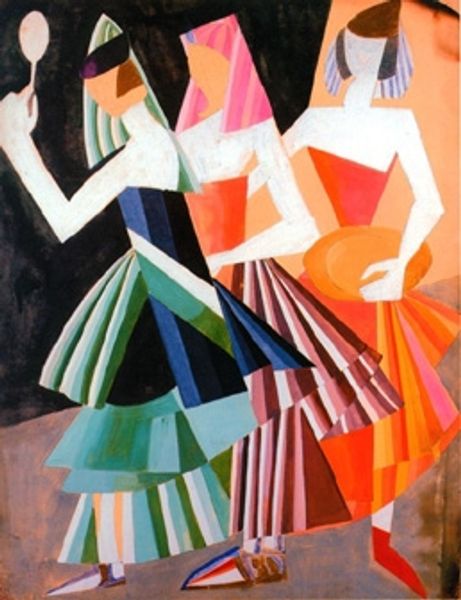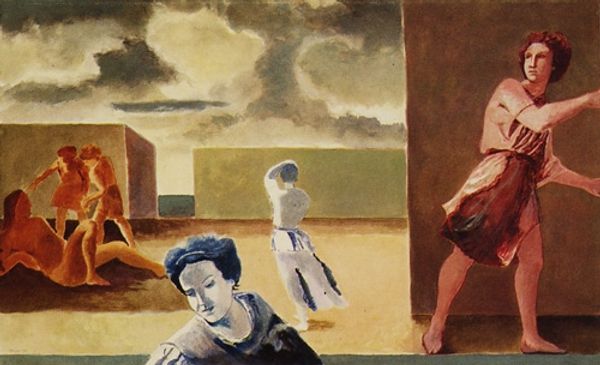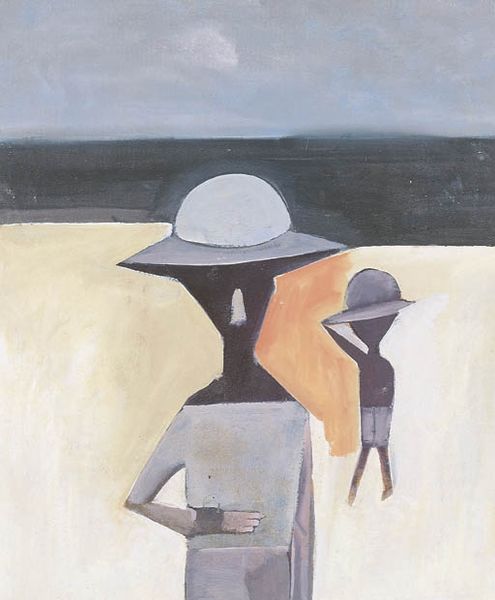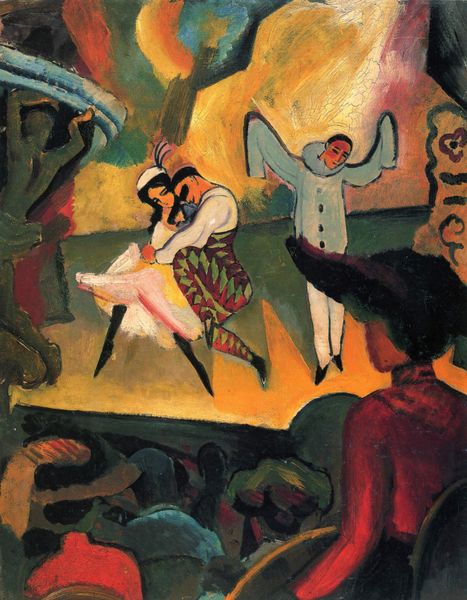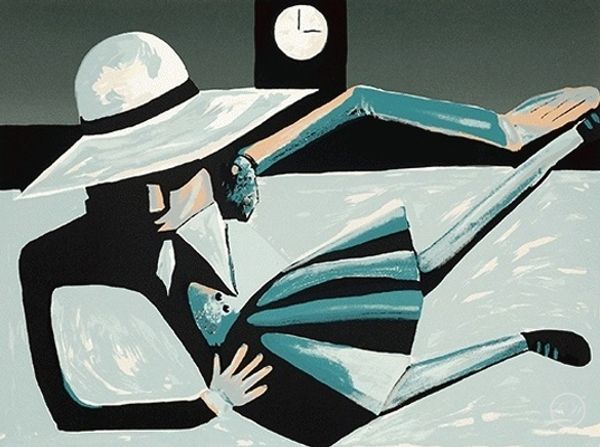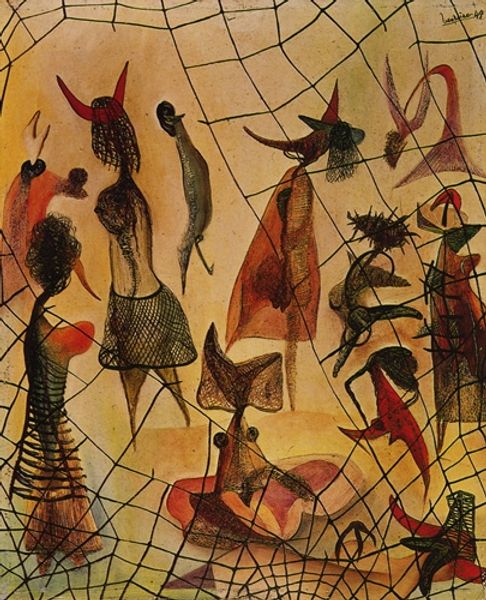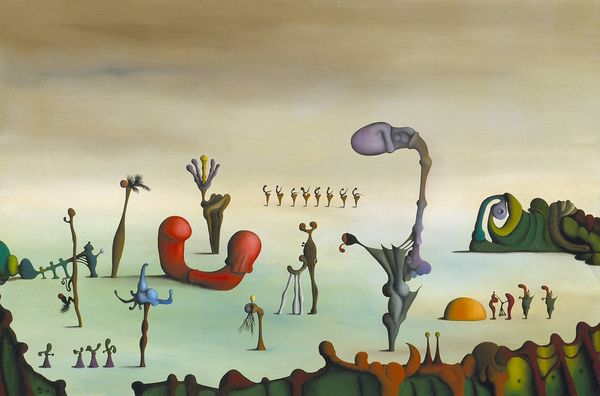
painting, acrylic-paint
#
portrait
#
painting
#
landscape
#
acrylic-paint
#
figuration
#
surrealism
#
portrait art
#
modernism
Copyright: Charles Blackman,Fair Use
Curator: Here we have Charles Blackman’s “Schoolgirls,” painted in 1954. Blackman often explored themes of childhood, alienation, and the search for belonging. Editor: The atmosphere is undeniably dreamlike. The simplified figures and that almost oppressive, solid blue ground make the scene feel less like a depiction of reality and more like a half-remembered memory or a slightly unsettling fantasy. Curator: The series, which these artworks belong to, coincided with anxieties regarding women’s increased public role in the postwar era. Their relative isolation, perhaps reflective of restrictive societal expectations that existed during this era, is echoed here. Editor: Note how the artist uses color to further isolate figures. See how the palette shifts from warmer to cooler tones for each one as we move toward the distance? A striking application of atmospheric perspective. And that stark white of the hat—it pulls the eye right to the featureless center of the closest figure. Curator: Yes, the blankness of the faces is critical. Blackman, having no formal training, creates space for psychological exploration through the use of ambiguous representation. It begs us to ask: what is lost, what is gained, and at what cost in the journey from childhood innocence into an adult existence? Editor: Consider also the interplay between flat shapes and the illusion of depth. We can almost feel the tension between representation and abstraction. The artist seems to ask the viewer to focus on pure shape and color rather than on faithful representational renderings. Curator: What strikes me is the subtle commentary on conformity within this "schoolgirl" landscape, hinting at the suppression of individuality as the schoolgirls navigate an unfamiliar social terrain. Blackman challenges us to consider institutional effect on personal development. Editor: The whole artwork resonates with an odd melancholy and strange beauty, the use of shape, line, and form create an affecting aesthetic experience which invites contemplation on not just Blackman's world, but our own perception of childhood. Curator: A remarkable distillation of postwar unease, framed by childhood observation and social narrative. Editor: Yes, through bold color and simplified form Blackman renders more than just a scene.
Comments
No comments
Be the first to comment and join the conversation on the ultimate creative platform.
